

Bali has been in many travel guide books for years now. Maybe too many. The Indonesian island has been receiving travellers from all over the world, taking in the breakfast bowl / salty hair / hipster aesthetic and wanderlusting their way through life. I joined their ranks this summer, and I was in awe at this Indonesian island. That’s why I’ve come up with a few reasons why you should visit Bali – and a few reasons why you shouldn’t.
When I was planning the blog posts that I would write about my travels this summer (I also went to Japan, by the way!), I just couldn’t seem to come up with a good blog post idea for Bali. Since it’s been so popular among travellers lately, it seemed like everything that could have been written about this island has actually been written and I had nothing more to add.
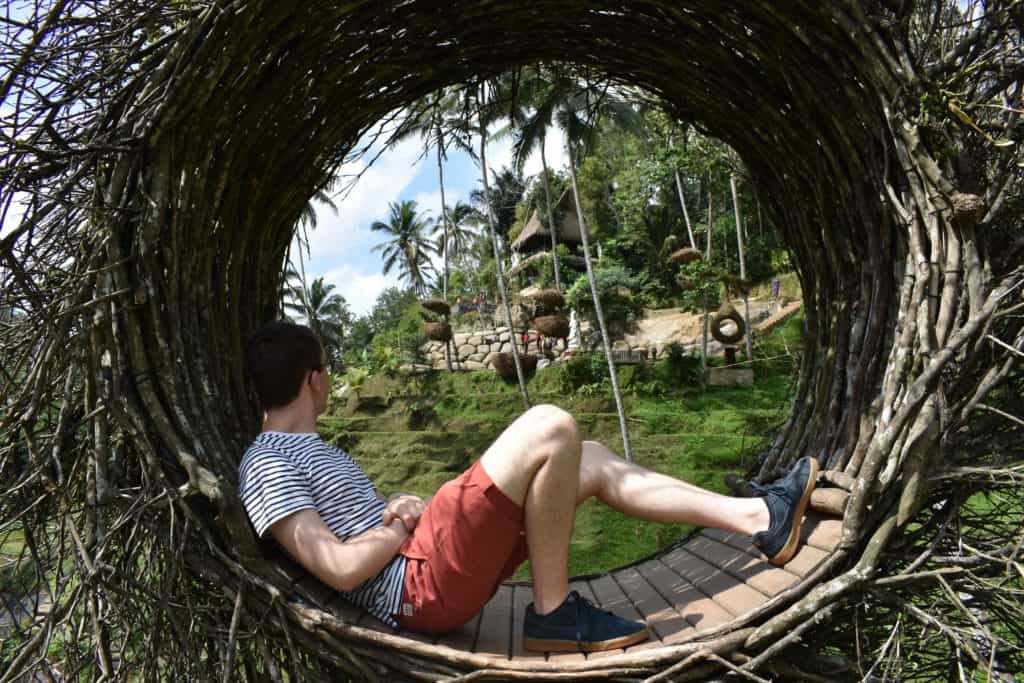
But after a while, I noticed that there weren’t many posts that highlighted both the positive and negative aspects of Bali. Most posts either focused on why Bali is worth a visit or why Bali is not worth a visit.
In this article, I’m taking the middle road and leaving the final decision up to you. These are the main reasons why I believe Bali should and shouldn’t be on your bucket list.
Before you continue reading: watch this Bali travel video I made to get you in the mood for this article. You won’t regret it.
Here’s an overview of everything I talk about in this post, in case you want to skip ahead and read one specific part (just click one of the links below!)

The food scene in Indonesia is unreal. Nasi goreng, beef rendang, chicken satay, not to mention the trendy breakfast bowls that are served daily in hipster cities like Canggu.
There are so many restaurants in Bali worth a visit that you’ll probably barely scratch the tip of the culinary iceberg that is Indonesia.
Also, if you’re used to paying $20+ for a meal, Bali restaurants are heaven on earth. So. Ridiculously. Cheap.
Also #2: breakfast bowls. That’s it.
One of the best things to do in Canggu (or any other city on the island, probably) is to get a massage.
Throughout our five full days on the island, we got three massages. Just throwing this out there to give you an idea.
If you truly want to relax and let go of any kind of stress or tension you have bottled up inside, a massage parlour on Bali is the perfect place for that.
There is nothing better to help you relax after a long, strenuous day of hiking around Bali than getting a foot massage. There’s something soothing about having a stranger rub your feet with essential oils and feeling the pressure leave your body.
Bali massage prices are definitely way cheaper than comparable services in Europe and Northern America. For a 1-hour full body massage, you’ll be set back between 60,000 and 100,000 IDR (about 4-7 USD). For a 30-minute foot massage (which I also highly recommend), you’ll pay about 50,000 IDR (about 3.50 USD).
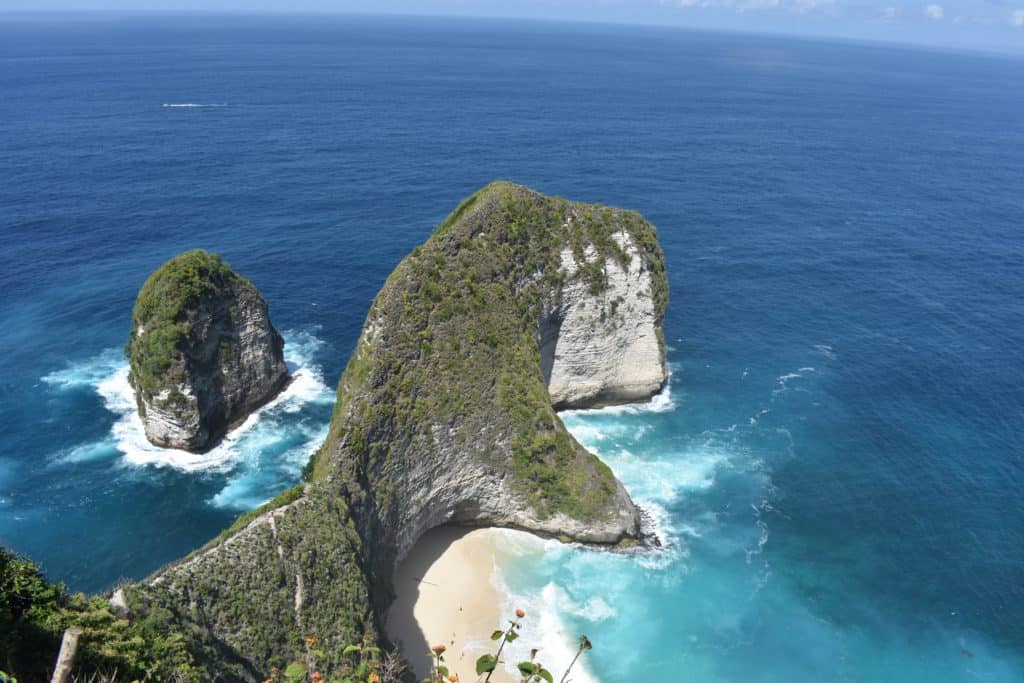
Still wondering what to do in Bali?
If you’ve got a day left to spare, why not consider leaving the island and taking a day trip to Nusa Penida?
Nusa Penida is an island that is located southeast of Bali and can be easily reached by boat, crossing the Badung Strait. You’ll have to get to Sanur Harbor in Denpasar (ask your taxi driver to help you get there) and then spend about 30 minutes on a speed boat before arriving at your destination.
A Nusa Penida day trip will show you everything that’s worth a visit on the island, and it will also include some – how do I say this – interesting roads. (Read: wobbly and headache-inducing)
Notable sights in Nusa Penida include Kelingking Beach (you’ll know this one from all the Instagram photos), Broken Beach, Angel’s Billabong and Crystal Bay. All of these can be combined easily on a fairly cheap organised day trip, including your own personal driver to take you all around the island.

Bali rice fields are great.
I might just be saying this because I haven’t seen rice paddies anywhere else, but still. I recommend the Tegallang Rice Terraces (about 20 minutes north of Ubud), because you’re able to really walk between the fields and see some locals.
Of course, locals know that these rice paddies are popular among tourists and they try their best to make some money out of it. However, I can still say that Tegallang was the most beautiful rice fields I have seen. So far.
Tip: if you want to take a picture of a local farmer in traditional clothes, you might want to reconsider. As I said before, locals know that their rice fields are popular, and they exploit this knowledge. If you do take a picture of one of them, they’ll expect you to pay up and they won’t leave you until you do.
You might not agree with me if you’ve been to Bali yourself. And I completely get that. After all, local taxi drivers and market/street vendors will always try to find a way to get you to spend some of your hard-earned money on their products. And they probably won’t be very nice and approachable about it.
However, I still strongly believe that the Balinese people are some of the friendliest and most helpful people out there.

One of the most popular things to do in Ubud is without a doubt the monkey sanctuary. In this forest-like terrain, monkeys roam around freely (and sometimes they even try to steal stuff from oblivious travellers’ backpacks).
A visit to Ubud monkey forest is a welcome respite from days of going through traffic in the back of a cab, wondering whether or not today is the day you die in a car crash.
The monkeys have a better training than many people give them credit for. They won’t jump on you, become aggressive or steal from you unless they are provoked. And even if something does happen, the park is guarded by many attentive rangers who have years of experience attending to these monkeys.
Besides, at an entrance fee of only 50,000 IDR (3.50 USD), it’s a steal.
If you’re looking for an authentic view of what Indonesian people are actually like, Bali isn’t the place to be.
As I mentioned before, the Balinese know that their island is immensely popular among Australian, American and European tourists. And they take no shame in using this knowledge to get them some extra pocket money (see also the ‘local farmer’ who posed for pictures with travellers at the rice fields).
If you’re looking for things to do on Bali that haven’t been done a million times by thousands of people yet, you’re going to be looking for quite a while.
I’m not saying that visiting Bali off-the-beaten-path is an unattainable dream that you shouldn’t pursue if you really feel like it.
Everyone who went to Bali has gotten a massage and sat by the beach at Kuta or Canggu. But that doesn’t mean that you shouldn’t do it.
Now, this is one of my personal main reasons why Bali is not worth a visit.
Although the people of Bali are generally very kind and accommodating to travellers, Bali is probably not a place where you’ll feel safe and secure as a foreign traveller.
For starters, traffic is crazy. I’m not exaggerating. Cars pass each other left and right on the highway, lanes don’t seem to have any significance and turn signals are not a thing, apparently. And I haven’t even talked about the scooters yet. (More on that later)
This goes without saying, but don’t try to smuggle drugs into Bali. You’ll be faced with massive cash fines and long jail sentences.
Be wary of taxi drivers and street vendors who try to get your attention in order to sell things to you. Once you give them some kind of attention (even just making eye contact or saying ‘No, thank you’ will encourage them), they’ll be difficult to get rid of. Just completely ignore them and move on.
I think you get the gist. I didn’t feel safe in Bali, and chances are that you won’t either.
I promised you more explanation about the problem of heavy traffic in Bali, right? Here it is.
Don’t go to Bali if you’re looking for a week of fun cruising through the island on a rental scooter, unless you’re a highly experienced scooter driver.
On our short stay in Bali, and especially on Nusa Penida, we saw several western-looking travel couples on scooters with bloody and bruised limbs. Admittedly, these might be from other accidents that had nothing to do with Bali, but there were too many for it to be a coincidence.
It’s no fun driving a scooter through rice paddies if you’re injured. Be very careful if you do decide to rent a scooter. Or, better yet, save yourself the trouble and don’t rent a scooter at all. There are plenty of other things to do in Bali.
You know which pictures I’m talking about. The ones on Instagram that show a pretty, tanned blonde girl in an infinity pool, turning her back to the camera, sipping on a coconut cocktail and overlooking the lush rice terraces of Bali.
The truth is, this isn’t what Bali actually looks like. Social media is giving us a false image of travel, and while social media-fueled tourism might be a good thing for local economies, it could lead to disappointment on the part of travellers convinced by this exact idealised image.
Yes, there are beautiful sights to be seen and wonderful things to do in Bali. But the road to these sights is paved with ugly concrete and garbage on the sidewalk.
I went to the beach in Bali twice. And I wasn’t impressed.
Tip: if you’re going to Canggu and you’re not planning on taking surfing classes, don’t go to Batu Bolong Beach. It’s not worth it.
You see, back in Belgium, I grew up in a coast city. Which means that it essentially takes a lot for a beach to impress me. The only beach that I saw during my week in Bali that came close to impressing me wasn’t even in Bali.
Kelingking Beach (Nusa Penida) looked great from up above. The beach down below doesn’t have a lot of people, because it takes a hell of a pathway to get down to the bottom. We didn’t get down, but at least it looked nice from a distance.
Undoubtedly, there are plenty of wonderful beaches in Bali, hidden away from the public. However, we were only in Bali for about six days, so we didn’t really get a chance to discover these.
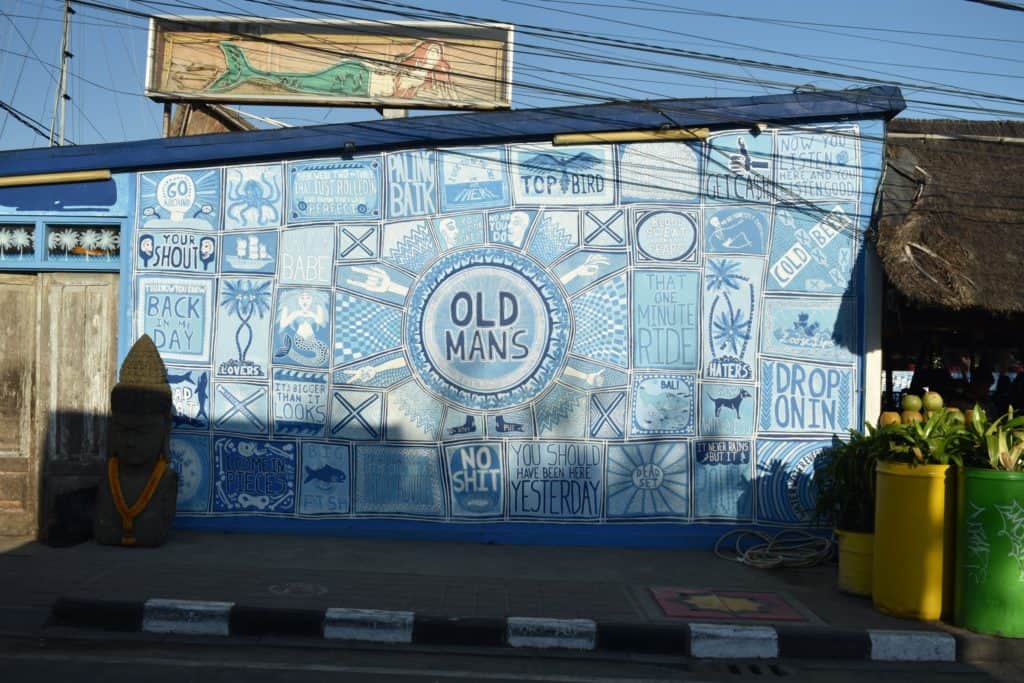
If you really want to know what I think about it: yes. Bali is overrated. But you shouldn’t abstain from visiting Bali just because I say it’s overrated. I also think there are many things worth seeing and discovering in Bali, and in the end, it’s really your own personal decision.
This whole post boils down to this one question, and the truth is that it’s up to you to decide. You have to ask yourself “Is Bali worth a visit?” and come up with an answer before you make the decision to travel there.
My only hope is that this post might shed some light on the actual condition of the Indonesian island, so that you can make an informed decision for yourself.
Would you still want to visit Bali after reading this post? Why (not)? Let me know in a comment!
Thanks for reading!
-S
PIN IT!



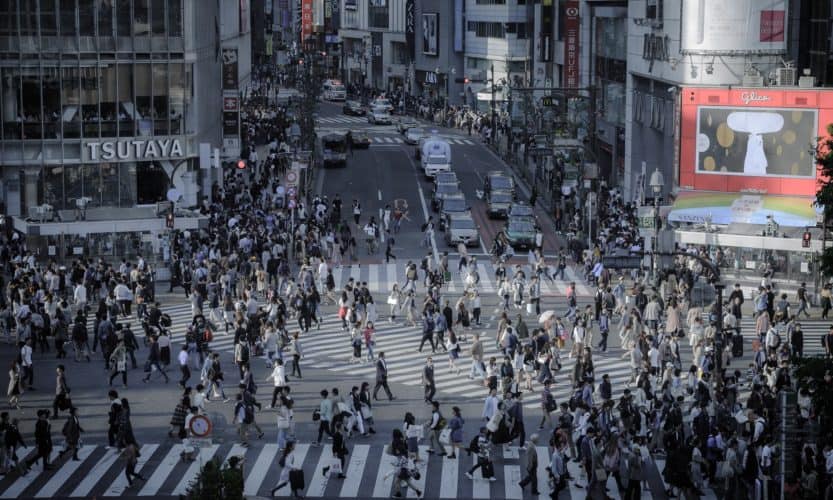
With over 38 million people calling it home, Tokyo is the most populated city on earth. Not only does that mean you could easily spend weeks there without being bored, it also means that there’s an abundance of things that travellers can (and should) do in the city. This is an overview of fifteen essential experiences for your first time in Tokyo.
I mean, the fact that you’re reading this post indicates that you don’t need any more reasons to visit Japan, right? With its cities like Osaka, Kyoto and Yokohama and its quaint villages like Shirakawa-go and Hakone, it’s easy to think that Japan should be a destination that’s a lot more popular. However, there are still some things you need to keep in mind before coming to this Asian country.
Either way, this list of essential Tokyo experiences will go a long way helping you plan your Japan itinerary. Your first visit to Japan will be overwhelming, and that’s okay. This list of things to do during your first time in Tokyo is here to help you find structure in the chaos that is the Japanese capital.
Note: I’ve said it numerous times, but you’ll want to purchase a JR Pass to help you get around Tokyo. Here’s why a JR Pass is a worthwhile investment.
Let’s do this.
Your first time in Tokyo should capture the most important things the city has to offer. This list will tell you what those things are. Check out the map embedded below to see where you can find the experiences mentioned here. (click here to reload the page if the map isn’t loading correctly)
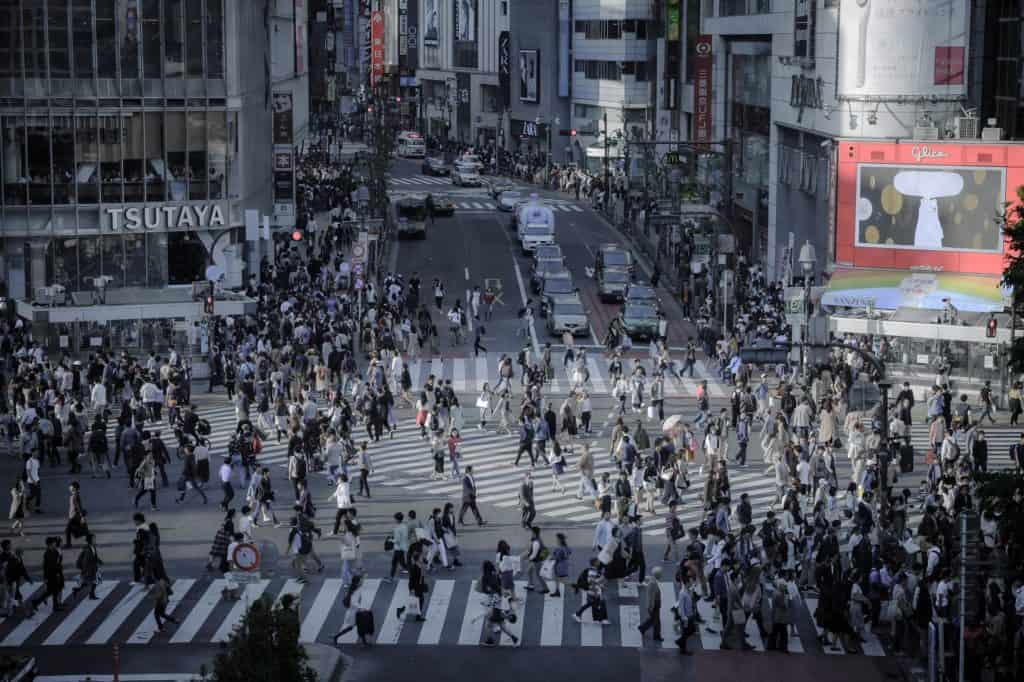
Not only is Shibuya Crossing the busiest and one of the best-known pedestrian crossings in the world, it’s also an iconic landmark in Tokyo and a symbol of modern times in Japan. Among the locals, it’s known as ‘Scramble Crossing’ because of its layout which also includes a diagonal crossing.
On your first visit to Tokyo, you could easily fill a day just wandering around Shibuya and taking in everything that the Japanese capital has to offer. Drink some coffee, listen to the sounds of the urban jungle and watch thousands of people cross the street at once.
From Tokyo Station or from Shinjuku Station: take the JR Yamanote Line to Shibuya Station. Take the Hachiko exit and you’ll have direct access to Shibuya Crossing.
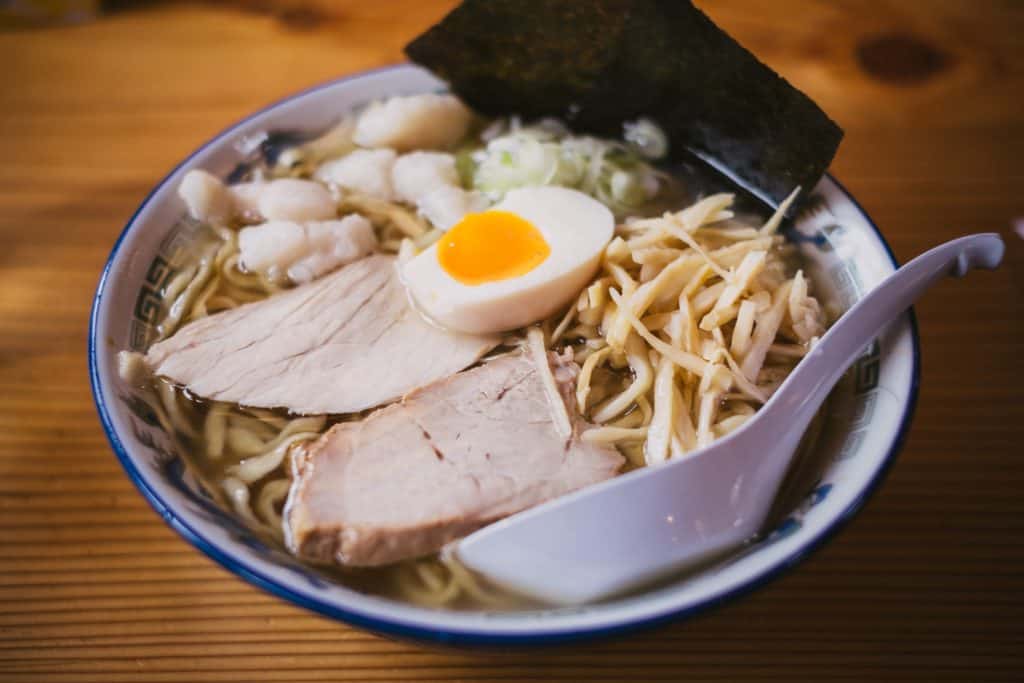
If Shibuya is Tokyo’s most technologically advanced district, Shinjuku surely is its culinary beating heart. As my family are well aware by now, I could rave about the bowl of ramen I had in Shinjuku all day. We picked a small ramen bar near one of Shinjuku’s train stations to go for lunch, and I had the best ramen of my life. Granted, I hadn’t really eaten ramen that didn’t come from a €0.50 packet of instant ramen that many times, but still.
For the real ramen experts among you: yes, I’m aware that the term ‘ramen’ encompasses many different kinds of noodle dishes in Japan. In case you’re unaware, there are several flavours, types of noodles, broths, toppings, and much more. If you’re looking for more information about varieties of ramen, there are tons of articles online.
In this district, you’ll find a broad range of places to eat ramen, from cheap noodle stands on the side of the road to high-end gastronomic restaurants. Anything ramen-related you can dream of, you’ll find it in Shinjuku.
Takeshita Street is the centre of Japanese youth culture. It’s a pedestrian shopping street that stretches 400 metres and it’s filled to the brim with kawaii boutiques, cafes, restaurants and clothing stores. It’s unlike anything you’ll ever see. Probably.
Many people believe that Takeshita Street is where kawaii culture originated. For this reason, the street is brimming with people who want to see what kawaii is all about during high season. And for this reason, I believe you should go there for your first time in Tokyo.
From Tokyo Station, Shinjuku Station or Shibuya Station, take the JR Yamanote Line to Harajuku Station. Takeshita Street starts across the road from the exit of Harajuku Station.
Okay, I know it sounds boring and it doesn’t seem like something you’d want to do on your first time in Tokyo. But hear me out.
Tokyo is home to some of the world’s biggest department stores, like Isetan, Sogo, Loft, PARCO, Tokyu and Hankyu (yes, I could go on, but I think you get the point I’m trying to make).
Whether you’re looking for a trendy new outfit, new home decor or stationery equipment for your next bullet journal adventure, you’ll find it in a department store in Japan. From tablecloths to a bottle of sunscreen, they’ll have everything you need.
Also, for those of you looking for the freshest and most delicious Japanese food that’s still relatively affordable: every department store you’ll visit has an entire floor dedicated to food. And, seeing as these buildings are massive, that’s a pretty big deal.

According to the Japan Amusement Machine and Marketing Association (yes, that’s a real thing), there are 4,856 registered arcades in all of Japan. Although there were over 40,000 in the industry’s prime time, arcade halls are still insanely popular in Japan.
In big cities like Osaka and Tokyo specifically, businessmen often spend an entire Saturday afternoon in an arcade hall trying to get the high-score on their favourite arcade machine. That’s something we can hardly even fathom, but it’s just a part of the arcade culture in Japan.
Fun fact: Japanese arcades don’t exclusively cater to teen guys and young men. They often have a whole floor (usually the top floor) dedicated to ‘purikura photo booths‘, which are mostly used by groups of teen girls who dress up and put on make-up for the perfect kawaii picture.
Visiting an arcade hall the first time you’re in Tokyo will give you a chance to dance to funky songs like nobody’s watching. You don’t have to worry about the Japanese people who are there to admire your moves, because you’ll likely never see them again in your life. This is your chance to go crazy.
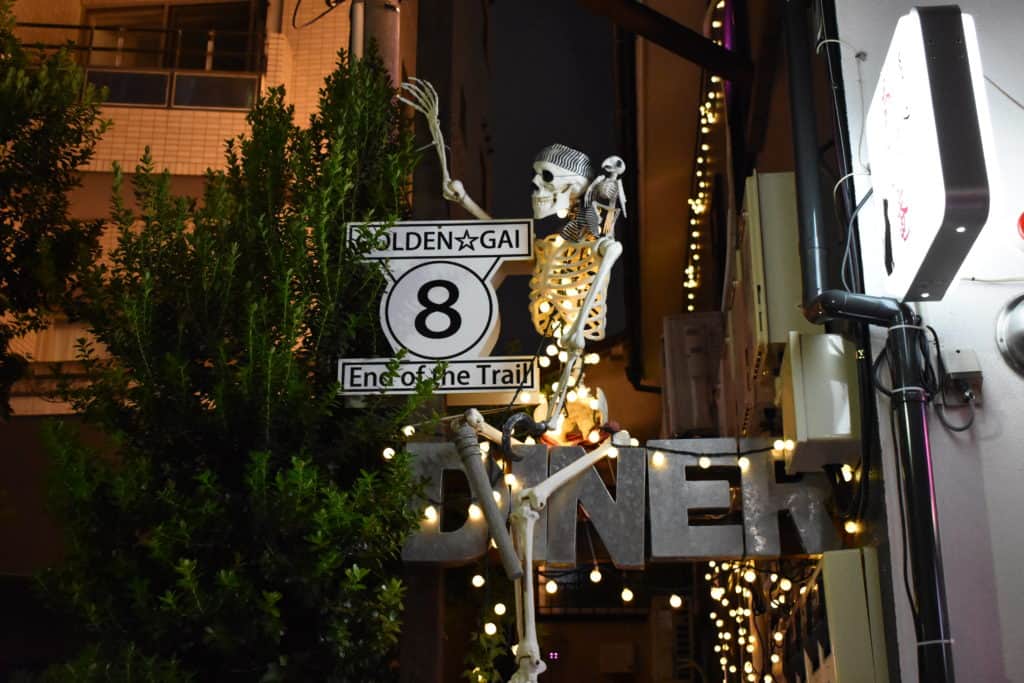
Golden Gai is a tiny area in Tokyo’s Shinjuku ward with a labyrinth of narrow alleyways that house nearly 200 tiny cafes. Considering the fact that the area only consists of six passageways, that’s impressive. These cafes and restaurants often only have enough seating space for a handful of people. Moreover, many bars only accept regulars because they don’t have enough space for travellers.
Tip: if you find an English menu outside, chances are that it’s safe for you to go inside as a traveller who doesn’t speak any Japanese.
The area was known as Tokyo’s red lights district before prostitution became illegal throughout the country in 1958. This is when Golden Gai started transforming into the almost cult-like Shinjuku neighbourhood it is today.
A great way to spend a night on your first time in Tokyo is to go bar-hopping in Golden Gai.
One of the most eye-catching things about this neighbourhood is its contrast with the surrounding area. While the ward of Shinjuku has been drastically changing for years and probably hasn’t looked the same for two consecutive days, the atmosphere in Golden Gai has largely remained unchanged.
From Tokyo Station, take the JR Chuo line to Shinjuku Station.
From Shibuya Station, take the JR Yamanote Line to Shinjuku Station.
When you arrive at Shinjuku Station, take the East Exit. Walk ahead towards the Shinjuku Ward Office and then turn right.
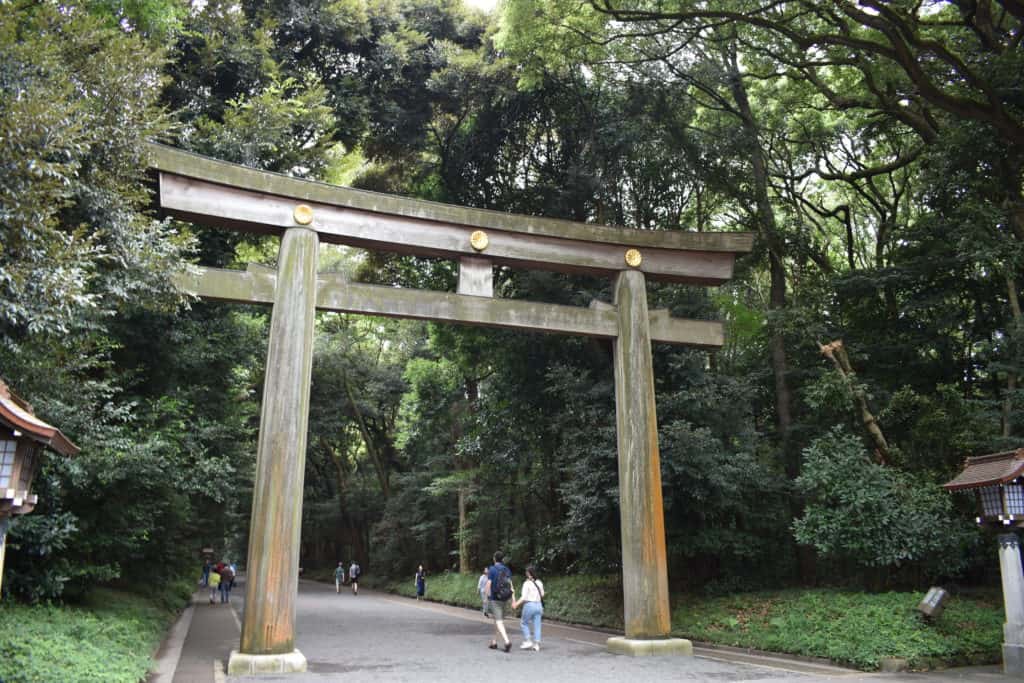
Meiji Shrine is a shrine located in Yoyogi Park, right next to Harajuku Station. It’s dedicated to Emperor Meiji, who opened Japan to the West in the 19th century, and his wife, Empress Shoken. This is the most famous Shinto shrine in Japan and it’s much more interesting and worthy of a visit than Senso-ji Temple.
In a Japanese context, it’s quite unusual to find a religious shrine in a big park in the city centre. It’s like entering a whole other world in the middle of the urban jungle that Tokyo represents.
If you want to witness a traditional Japanese wedding procession, Sunday mornings at Meiji Shrine are probably your best bet. We saw a Japanese couple get married here and it was quite spectacular.
Admission to this shrine is free and it’s open from sunrise to sunset.
From Tokyo Station, Shibuya Station or Shinjuku Station, take the JR Yamanote Line to Harajuku Station. Upon arrival in Harajuku, exit the station and turn right. Follow the path until you reach a concrete bridge that crosses the train tracks. Cross the bridge and you’ll see a large torii gate in front of you. This is the entrance to Meiji Shrine.
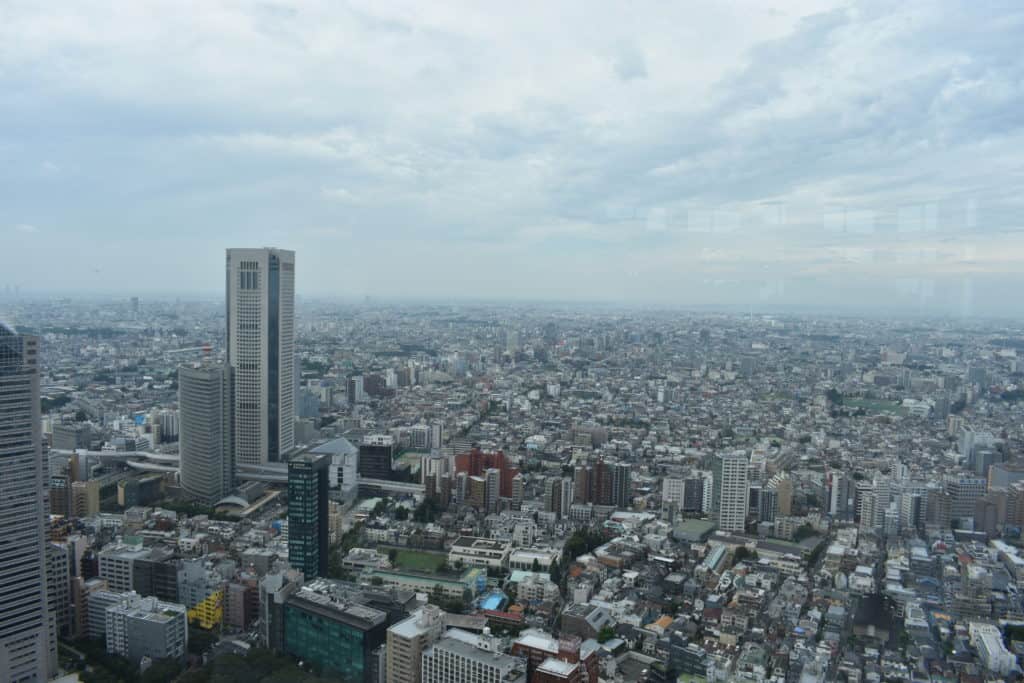
The administrative heart of Tokyo is located in Shinjuku, in the Metropolitan Government Buildings. They’re popular among travellers because of the free observation decks that offer breathtaking panoramic views of Tokyo. Although I wouldn’t recommend visiting these observation decks if you suffer from vertigo. Don’t say you weren’t warned.
Many people believe that the North tower is more interesting for travellers, because it’s open until later at night, making it a great spot for nightly panorama pictures or time-lapses.
Since it’s unlikely that you’ll come back to this building after witnessing it once, it’s a perfect experience for your first time in Tokyo.
So, as I mentioned, access to the observation decks is free of charge. The North Observatory is open from 9:30 am to 11 pm and the South Observatory is open from 9:30 am to 5:30 pm. Admission ends 30 minutes before closing time.
From Shibuya Station, take the JR Yamanote Line to Shinjuku Station.
From Tokyo Station, take the JR Chuo Line to Shinjuku Station.
When you arrive at Shinjuku Station, take the West Exit and follow the main road for about 10 minutes until you see two very similar tall buildings on your left hand side. Those two buildings are what you’re looking for.
Again, hear me out here.
Your first visit to Japan has to include a Japanese toilet experience. You might think toilets are nothing special, and justifiably so, but your first time in Tokyo will surprise you.
As can be expected from a highly technologically advanced country like Japan, these toilets have everything you could ever dream of in a toilet. (Just so we’re on the same page here, I’m not talking about Japanese squat toilets)
Toilets in Japan have features like a built-in bidet option – which is much more hygienic than toilet paper, by the way -, water pressure and temperature customisation, flushing sounds to help mask noises you don’t want other people to hear, heated seats, and much more.
I know this comes across like I’m obsessed with toilets, but you’ll understand after you’ve experienced it.
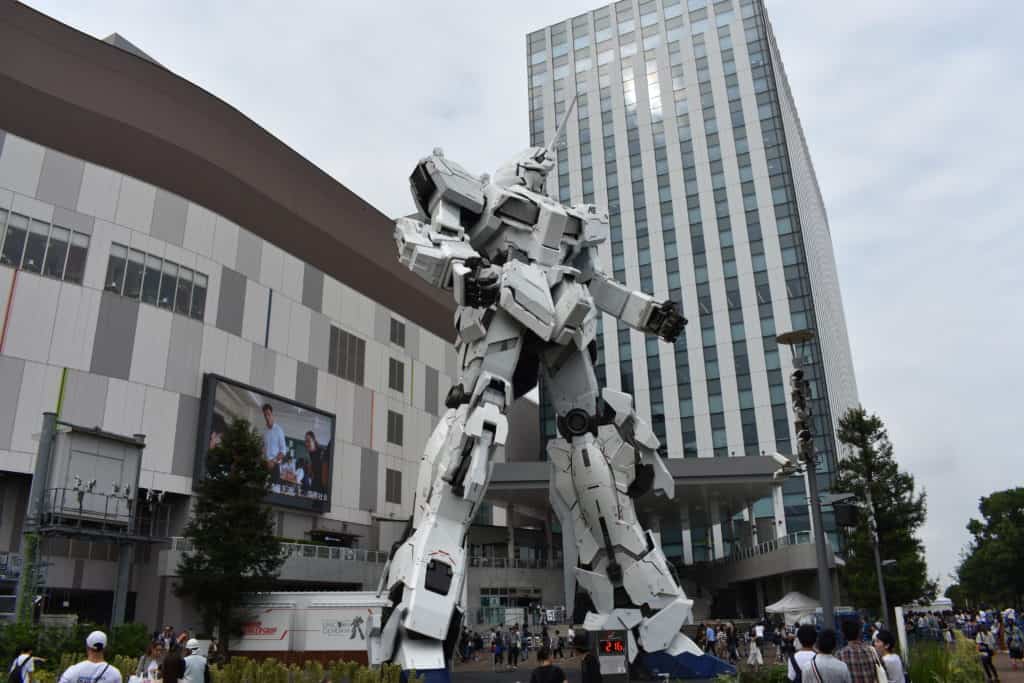
Odaiba is a large man-made island in Tokyo Bay, accessible from Tokyo by the Rainbow Bridge. It was originally founded as a military base in the 19th century, but it’s mostly known for its large shopping and entertainment districts nowadays.
The most important things to do and visit on Odaiba are the enormous Gundam statue (pictured above), the Rainbow Bridge and the replica of the Statue of Liberty. Other than that, you’ll want to spend some time in one of the many shopping malls on the island.
Odaiba is definitely worth an afternoon on your first visit to Tokyo.
Getting to Odaiba is a little trickier than getting to the other attractions covered in this article.
From Tokyo Station, Shibuya Station and Shinjuku Station, take the JR Yamanote Line to Osaki Station. In Osaki Station, purchase a ticket for the Rinkai Line (which is NOT covered by your JR Pass) and then take the Rinkai Line to Tokyo Teleport Station.
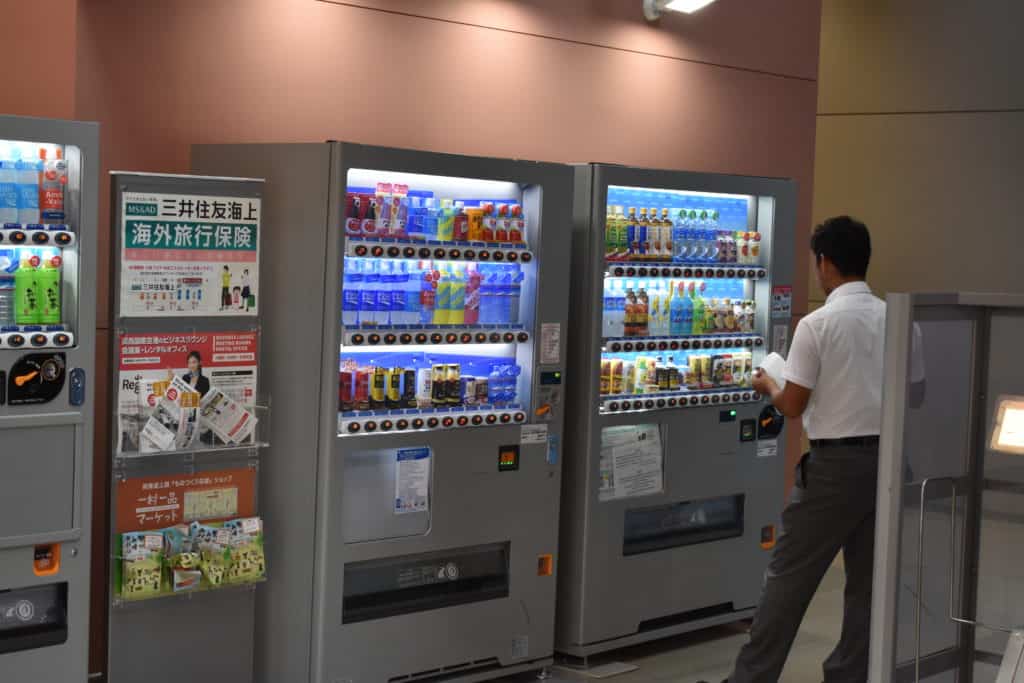
Vending machines of all kinds are not only popular in Tokyo, but throughout the entire country. To put this into perspective, Japan has one vending machine for every 23 inhabitants. That’s over 5 million vending machines spread throughout the country. Yes, really.
These machines can be found on every street corner and they usually sell refrigerated drinks (but some of them are known to sell some crazy things).
For visitors, these vending machines have almost become a tourist attraction, but for the locals, it’s mostly just a cheap, convenient way to get some well-needed refreshment.
For you, your first time in Tokyo is the perfect moment to experience the magic of these vending machines for yourself.
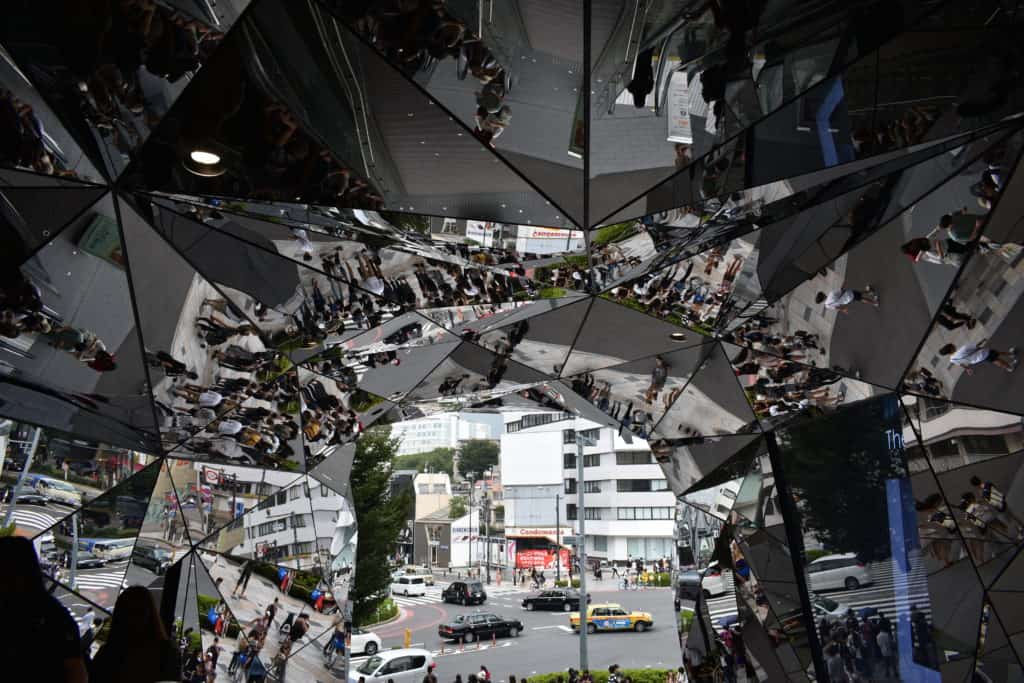
New York City has Fifth Avenue, Paris has the Champs-Élysees and London has Oxford Street. Tokyo has Omotesandō. This is Tokyo’s luxury shopping district that houses international brand boutiques and fashion flagship stores for brands like Dior, Gucci, Louis Vuitton and Yves Saint Laurent.
You can’t really not include a stroll along Omotesandō in your itinerary for your first time in Tokyo.
If you’re Irish, you have another reason to visit Omotesandō: it’s home to Tokyo’s annual Saint Patrick’s Day Parade. And even if you’re not Irish, it’s still a sight to behold.
Side note: if you’re looking for the place that’s pictured above, it’s called Tokyu Plaza Omotesando Harajuku. You and your Instagram feed are welcome.
From Tokyo Station, take the Maronouchi Line to Akasaka-Mitsuke Station. Transfer to the Ginza Line and get off at Omote-Sando Station.
From Shibuya Station, take the Ginza Line to Omote-Sando Station.
From Shinjuku Station, take the JR Yamanote Line to Shibuya Station and transfer to the Ginza Line to Omote-Sando Station.
Note: the Maronouchi Line and the Ginza Line are not covered by the JR Pass.
I mentioned Yoyogi Park earlier as the park that’s home to the Meiji Shrine. However, that’s not everything that one of the biggest parks of Tokyo has to offer.
During cherry blossom season (early April in most major central cities like Tokyo, Osaka and Kyoto), Yoyogi Park is the perfect place to sit down for a romantic picnic with your significant other or with your other travel companions.
However, cherry blossom season only lasts for about two weeks a year and there are fifty more weeks in which you can visit Tokyo for the first time. Should you be there in one of those fifty weeks and have some spare time on a Sunday, you might want to head to the Harajuku Entrance to Yoyogi Park.
This is where rockabilly dance crews gather every week to perform to music from the fifties. These dancers often look like they took a time machine to come to the twenty-first century, dressed in leather jackets and rocking slicked-back hairdos.
Keep in mind that there’s no fixed time for these performances, so you’ll have to be a bit lucky to witness them.
These dancers don’t do this to make money, but they’re just in it for entertainment. L’art pour l’art.
From Shibuya Station, Shinjuku Station and Tokyo Station, take the JR Yamanote Line to Harajuku Station and take the West Exit.
The infamous tuna auction of Tsukiji fish market is no longer to be found at Tsukiji. It moved to Toyosu Market, on one of the man-made islands in the harbour of Tokyo.
The fish market and tuna auction, now located at Toyosu, is pretty much what it says on the tin. In this building, you’ll find huge frozen tunas being auctioned off and fresh fish, seafood and sushi being prepared right before your eyes.
You can’t actually access the auction hall if you’re not planning on buying anything, but you can admire the fascinating tuna auction from a viewing platform up above.
If you don’t want to get up early during your first time in Tokyo, you should do it anyway. This fish market is worth it.
From Tokyo Station, take the JR Yamanote Line to Yurakucho Station and transfer to the Yurakucho Line. Get off at Toyosu Station and transfer again to the Yurikamome Line. Get off at Shijo-Mae Station.
From Shibuya Station, take the Hanzomon Line to Nagatacho Station and transfer to the Yurakucho Line. Get off at Toyosu Station and transfer again to the Yurikamome Line. Get off at Shijo-Mae Station.
From Shinjuku Station, take the Chuo-Sobu Line (Local) to Ichigaya Station and transfer to the Yurakucho Line. Get off at Toyosu Station and transfer again to the Yurikamome Line. Get off at Shijo-Mae Station.
Note: the Yurakucho, Yurikamome and Hanzomon Lines are subway lines and are NOT covered by the JR Pass.
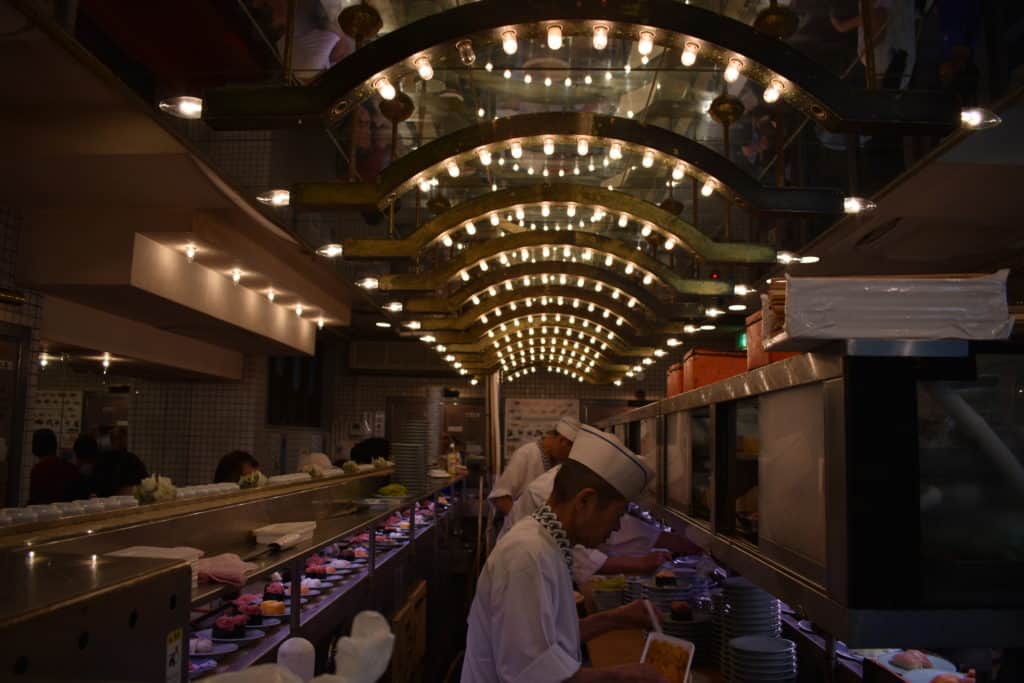
I’m still talking about food. I would apologise, but I’m not really sorry – after all, you’re trying to make your first time in Tokyo unforgettable, and Japanese food is an essential part of that experience.
In case you’re unaware, this is what a sushi belt is: there’s a rotating conveyor belt that transports sushi in a restaurant-like room, constructed around a central area where chefs are preparing fresh sushi and sashimi before your eyes. (As you can see in the video below)
The sushi you’ll eat in these establishments will be nothing like store-bought sushi you can buy at home – it’s as fresh as it gets and the taste is extraordinary.
Surprisingly, the price tag attached to this meal won’t set you back too much. Many sushi belt places have differently coloured plates that indicate sushi of different prices. You take the plates from the belt, eat the sushi and keep the plates. Then, when you’re about to pay for your food, a waiter counts your plates and calculates how much you have to pay.
These places give travellers like yourself an authentic view into life for the locals. And isn’t that what your first time in Tokyo should be about?
Now, you’ve got a great idea of how to rock a visit to the Japanese capital.
If you got through all these experiences on your first time in Tokyo, you’ve got a strong foundation in case you’re ever coming back to this city in the future and you need to show your friends around. You’ll be able to impress them with your knowledge of Tokyo and everyone will thank you.
And on that note, I’ll leave you.
Is there anything essential I missed in this list? Let me know in a comment!
Thank you for reading!
-S
PIN IT!
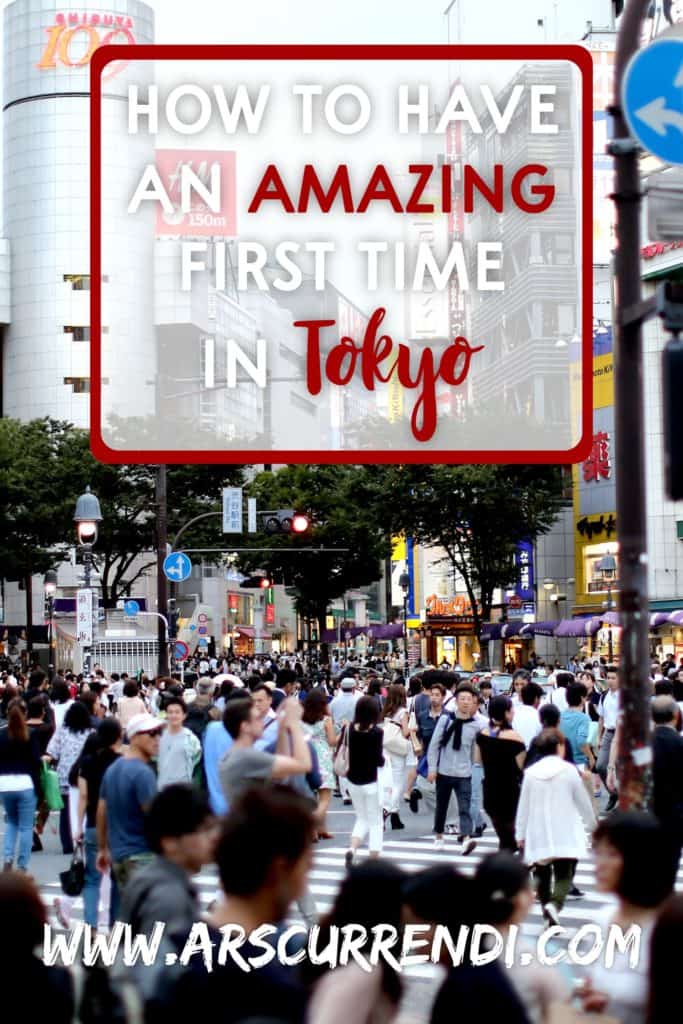
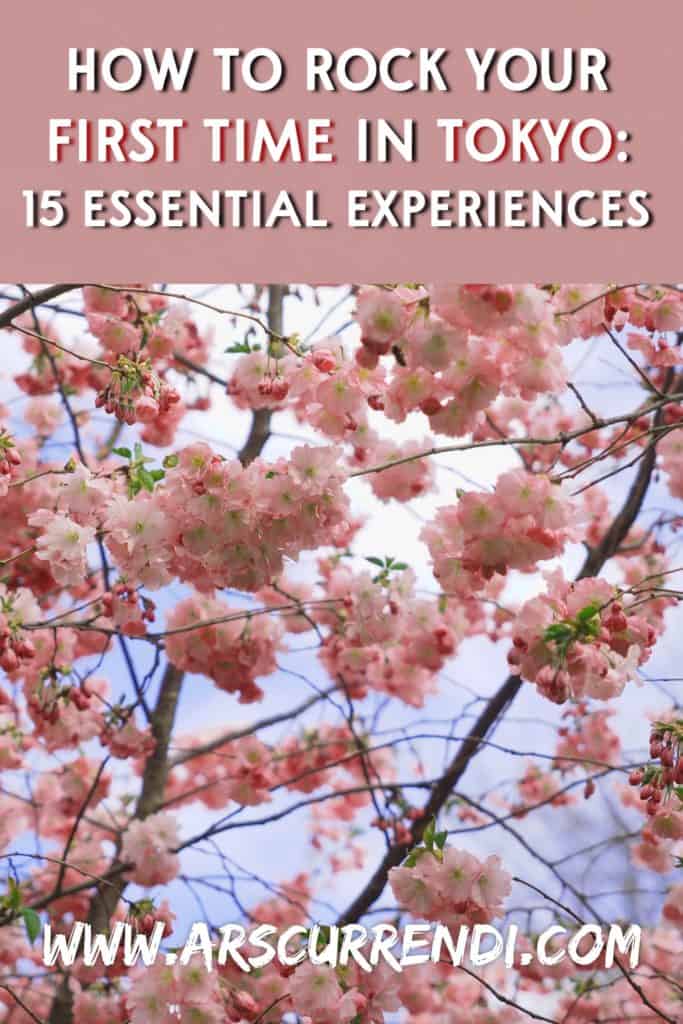
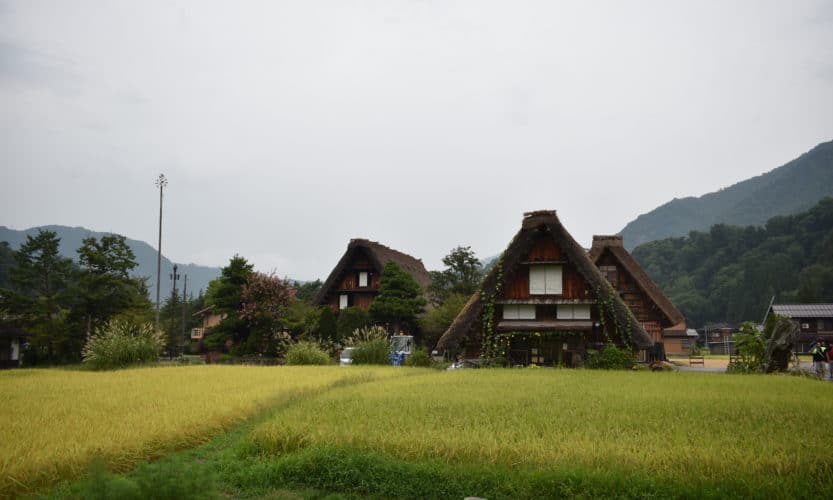
Japan tends to be seen as a daunting country that is filled with megacities where millions of people live. During your visit to Japan, you might want to leave those energetic cities behind for just a day and escape into the countryside. If that’s the case, the mountain village called Shirakawa-go is the perfect day trip destination for you.
Shirakawa-go is a historical mountain village located within the city of Shirakawa, in central Japan (Gifu Prefecture). The village is mostly known for its traditional farmhouses with thatched roofs, constructed in the gasshō style.
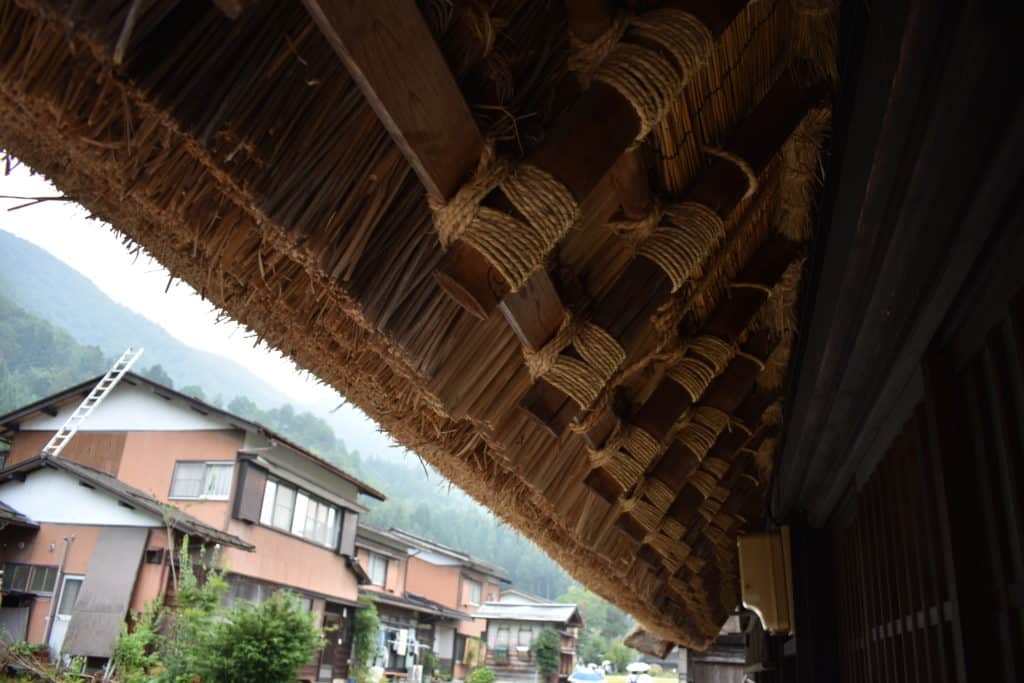
Shirakawa-go, just like its neighbouring village Gokayama, heavily depends on seasonal tourism for its income. The villages are located in a remote valley, surrounded by rugged mountains. This valley is known for its heavy snowfall in the winter months. Both villages became UNESCO World Heritage sites in 1995.
Yes, you could rent a car and drive to Shirakawa from wherever you are staying. However, car rentals in Japan tend to be more expensive than elsewhere (and much more expensive than using public transport) and they’re a huge pain when you’re travelling in and around big cities. And I’m not even going to mention finding a parking spot.
If you can, avoid renting a car and take public transport instead. It’s usually a hell of a lot cheaper, it’s easier and it’s better for the environment.
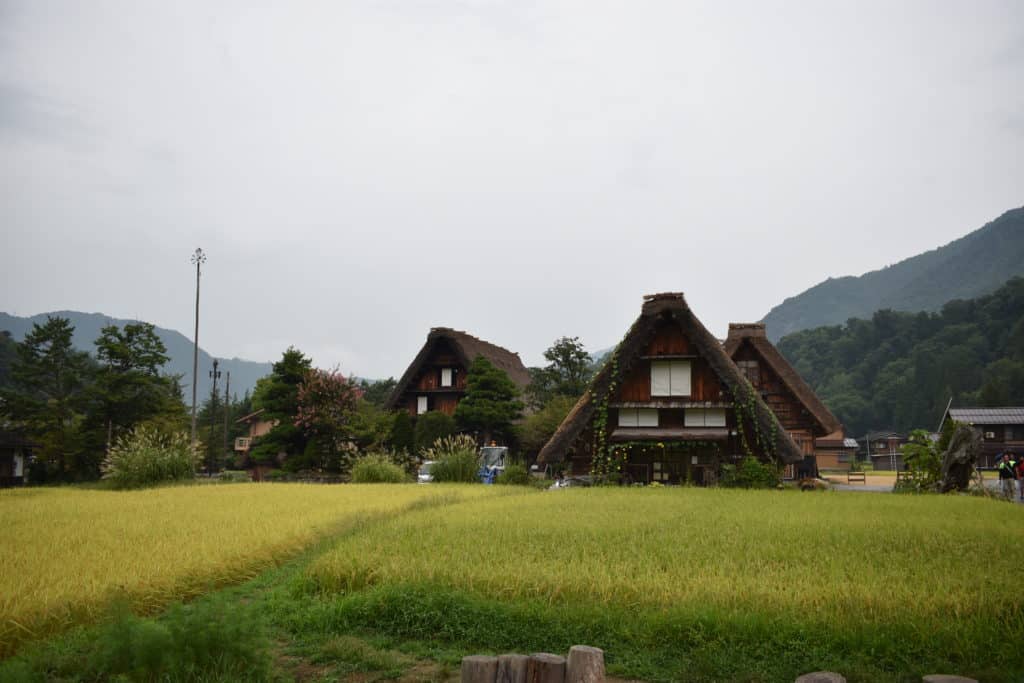
Crossing long distances by public transport in Japan is not that difficult, once you get an idea of how it all works. First off, I highly recommend you get a JR Pass. This pass is only available to foreigners visiting Japan and it covers all JR trains and some extras like a ferry to Itsukushima. It might seem expensive at first, but it’ll still be cheaper than paying every train individually if you’re staying for at least a week. Yes, the trains in Japan really are that expensive.
You might still be confused as to how to interpret the train system in Japan, but it’s pretty easy to get the hang of. Just click the link and read the information about trains in Japan (the page says Osaka, but it’s the same throughout the country).
One of the closest major cities to Shirakawa-go is Kanazawa, which means it’s the perfect basis for a day trip.
Take the Hokutetsu Bus from bus stop 2 at the bus terminal of Kanazawa Station (East Gate) bound for Shirakawa-go. The bus ride will take about 1 hour and 20 minutes. A one-way ticket costs 1,850 yen (about €14.50 / £13 / $16.50) for adults and a return ticket costs 3,290 yen (about €25.50 / £23 / $29). Tickets can be booked at the Kanazawa Station Transport Information Center.
From JR Toyama Station, take the Nohi / Hokutetsu / Toyama Chiho Tetsudo Bus bound for Shirakawa-go. The bus ride will take about 1 hour and 30 minutes. A one-way ticket costs 1,700 yen (about €13 / £12 / $15) for adults and a return ticket costs 3,060 yen (about €24 / £21 / $27). You can make online seat reservations.
From Nagoya Meitetsu Bus Center, take the Gifu Bus bound for Shirakawa-go. The bus ride will take just under 3 hours. A one-way ticket costs 3,900 yen (about €30 / £27 / $34.50). You can make online seat reservations.
Take the JR Thunderbird limited express train from Osaka Station to Kanazawa Station. In Kanazawa, transfer to the Nohi / Hokutetsu Bus bound for Shirakawa-go. The whole trip will take about 4 hours. A one-way ticket, assuming you have a JR Pass to cover the cost of the Shinkansen, costs 1,850 yen (about €14.50 / £13 / $16.50) for adults and a return ticket costs 3,290 yen (about €25.50 / £23 / $29).
For travellers coming from Kyoto: take the JR Thunderbird limited express train from Kyoto Station to Kanazawa Station, and then transfer to the same bus mentioned above.
Since the travel time from Kyoto and Osaka to Shirakawa is so long, you might want to consider staying in Kanazawa for a night to make the whole experience a bit more pleasant and make your schedule less packed. You might also want to reconsider a day trip to Shirakawa altogether if you don’t think you’ll be able to deal with this.
From Tokyo Station, take the Hokuriku Shinkansen bound for Kanazawa and get off at Toyama Station. There, transfer to the Nohi / Hokutetsu / Toyama Chiho Tetsudo Bus bound for Shirakawa-go. The whole trip will take about 3 hours and 30 minutes. A one-way ticket, assuming you have a JR Pass to cover the cost of the Shinkansen, costs 1,700 yen (about €13 / £12 / $15) for adults and a return ticket costs 3,060 yen (about €24 / £21 / $27). You can make online seat reservations.
Again, you might want to consider staying in Kanazawa or not doing this day trip from Tokyo because of the long travel time.
Since the village itself isn’t very big, the most logical way to get around Shirakawa-go is on foot. Besides, walking through this town will be the best way to experience what it really stands for.
Other than walking around the quaint streets, there’s also a vantage point up one of the mountains. You can walk all the way up there through a walking trail through the forest (caution: this trail is closed in heavy snow), but we saved some time – and energy – by taking the bus up to the viewpoint.
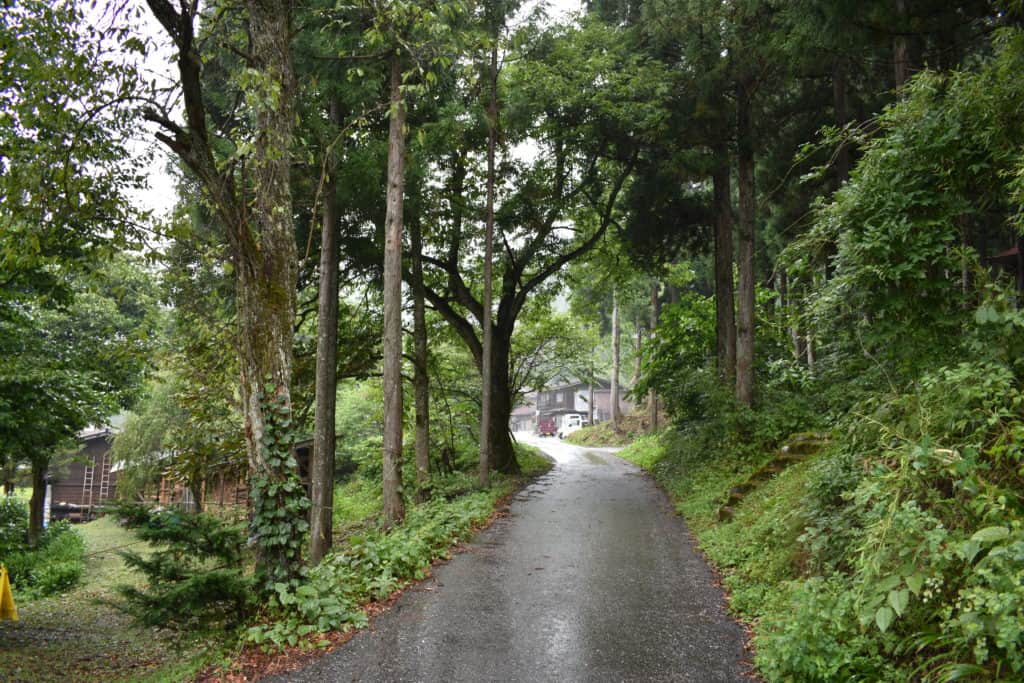
The bus stop for the shuttle bus is located right in the middle of the village, on the main road (which is closed to traffic between 9 am and 4 pm every day. It’s very easy to find the shuttle bus. A return trip will set you back 200 yen and the bus runs 3 times every hour.
Do you want to be transported back in time? Go to Shirakawa. Have you ever wondered what traditional Japanese architecture looks like? Go to Shirakawa. Do you want to hear the birds sing and see the snow fall in a quaint mountain village? You guessed it: go to Shirakawa.
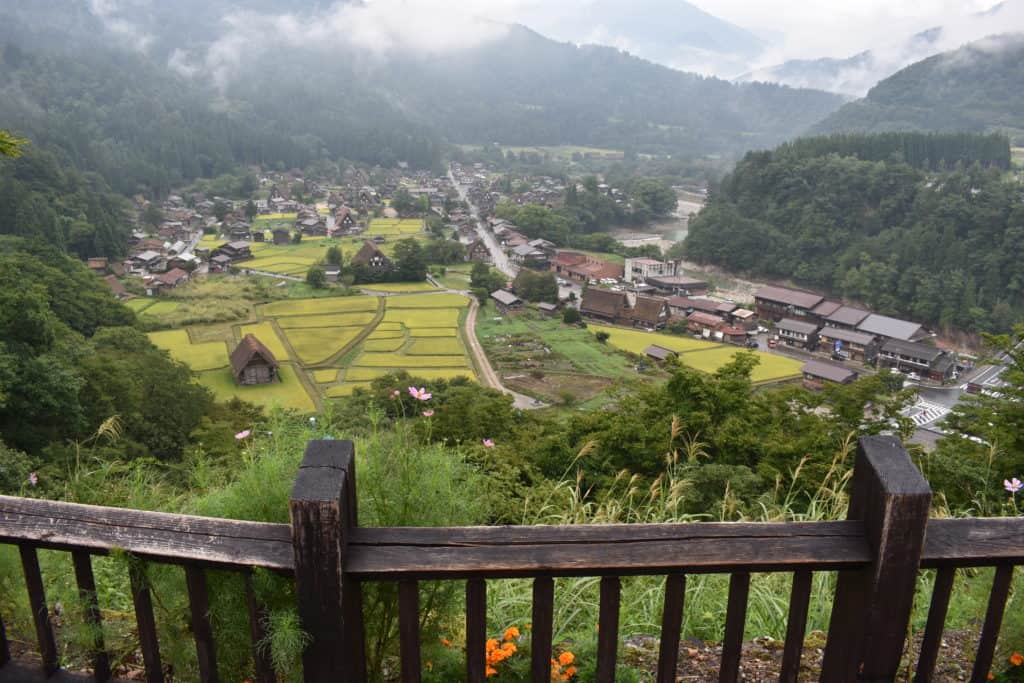
Here are some things that make the day trip to Shirakawa-go worth it:
As I mentioned above, it’s very easy to get to the observation deck where you can get a magnificent view of the village and the river that runs through it. It’s more than worth it, even if it’s just for the Instagram pictures.
Shirakawa-go is one of those destinations that can be visited at literally any time, depending on your personal preferences. Here’s a quick useful overview of what happens when and when you should plan your visit to Shirakawa.
The village lights up in the winter, which leads to gorgeous views. It’s arguably the most popular season to visit Shirakawa-go, but that also means that there are more tourists among you.
Recently, the popularity of this light-up event has even caused the city to limit the number of visitors they allow into the village to still be able to ensure a pleasant experience for everyone.
By the way: the reason why the huts and houses in Shirakawa-go are constructed with steep thatched roofs is because that construction is able to handle large amounts of snow, which the valley is known for.
Let me paint you a quick word picture. The thatched roofs of a mountain-surrounded valley village and cherry blossom trees. That’s it. That’s the whole picture. Because it’s all the reason you need to visit Shirakawa-go during spring.
While summer is probably the least popular season for this tourist attraction, it also means that there won’t be as many other tourists there with you.
But still, it can be very impressive to visit the village under a clear summer sky, with all the flowers and trees around the village in full bloom. Also, it’ll be easier to take pictures of the picturesque scenery with this summer lighting.
One of the best places to really experience what autumn is like in Japan is without a doubt Shirakawa-go. In the village, you can marvel at all the maple trees in full glory with their reddish brown autumn coloured leaves.
I won’t even have to convince you with any more words after you check out these pictures by Stewie Overseas.
We visited Shirakawa-go just before the autumn, but the weather was more than autumn-ish. It was cold and it was raining, but the village was still enchanting AF.
Have you ever been to Shirakawa-go? What did you think of it? If you haven’t been there, which season would you prefer? Let me know in a comment! I’d love to hear from you.
Thanks for reading!
-S
PIN IT!
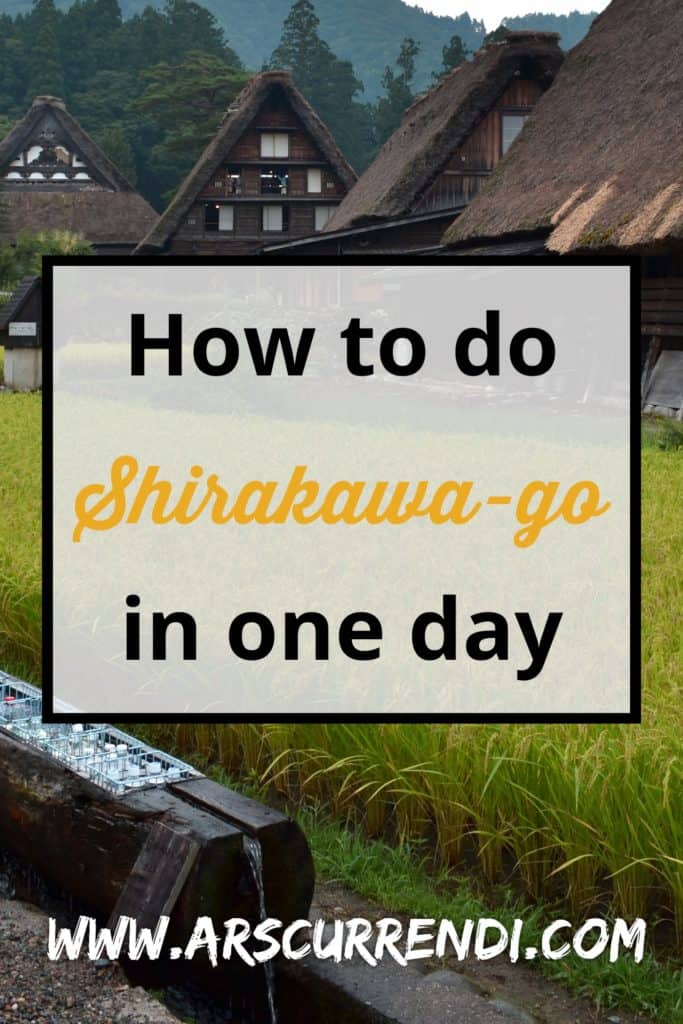


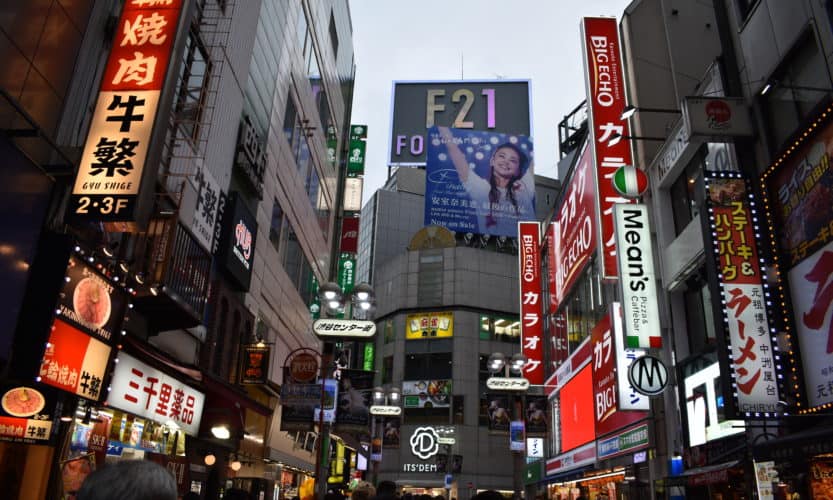
Japan, often known to the outside world as one of the most modern countries in the world, is a country that most people are either ecstatic or indifferent about. Seeing as my dad often had to go to Japan for work and told us stories of his travels, my sister and I were always very excited about visiting the country ourselves one day. In this blog post, I’ll share our reasons for visiting Japan and my ABC of our visit to Japan with you.
Latest update: 2 July 2019
Visiting Japan has been a dream of my sister and I for as long as I can remember. This summer, we finally got to board the airplane bound for Osaka and we lived out our Japanese dreams.
I hear you wonder. “But why Japan? Surely there are other beautiful destinations that are closer by and less expensive to visit?” Well, yes. But we had a few reasons for preferring Japan over any of these destinations.
It might not seem like this, since it’s basically an island at the other side of the world. At least if you’re from Europe. However, flying to Japan was a lot easier than you might expect.
What we did is this:
For a destination that is 9,300 km (5,800 miles) away from home, that seems like a reasonable travel itinerary, right?
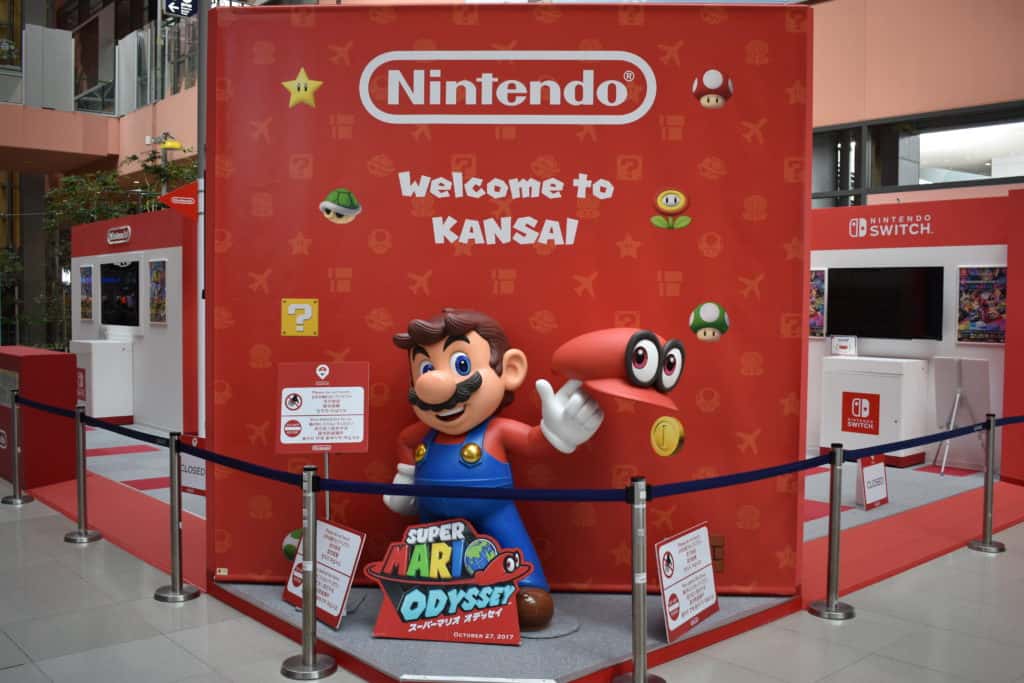
But that’s not the only thing that makes this Asian island an easy destination. You see, my sister and I added another week to our trip. When my parents flew home after our Japan trip, we boarded a flight to Bali.
And although we hadn’t expected to fly another eight hours when we started planning this summer’s holiday, it was extremely easy to get from Japan to Bali. There was a direct flight and we had no problems whatsoever in or around the airport. (We did fail to locate our Wi-Fi device when we arrived in Indonesia, but that’s another story)
Related: How to survive a long-haul flight
At the time of writing this, I’m studying multilingual communication and every single professor tells me something else about the use of the word ‘culture’. It’s being overused, it’s insensitive, it’s a man-made concept that doesn’t really exist, …
You dream it, I’ve had classes about it.
But still: before we started planning this trip, I have always had this idea of Japan as a mythical nation with sumo wrestlers, neon signs, temples and sushi belts.
I’ve always wanted to see whether that image would hold up in reality and how much of it was actually true.
Even when we had just touched down and we were waiting for our bus to the city centre at the airport, there was some kind of culture shock. I know it sounds like a bad thing, but this was more like an ‘I can’t believe we’re here and it’s so different from what I’m used to‘ vibe.
Admittedly, my dad had never gone to Japan for a holiday until we went together as a family. He was always on assignment from the company he works for, and he was always there for business.
Still, though. It was still fascinating to hear him talk about what it’s like to have ramen noodles for breakfast and to be overwhelmed by the number of people in and around the train station, on their way to work. Even just hearing him talk about what it felt like to go to a meeting with Japanese people was eye-opening.
In the twentieth century, Japan was fortunate enough to be the country where an economic miracle took place. After World War 2, the country’s economy was devastated, but it managed to grow tremendously in the period between 1945 and 1990. After this miraculous growth, Japanese demographics stagnated and the workforce dwindled, causing its economic growth to slow down.
The Japanese economy was at one point the second-largest economy in the world, beaten only by the United States. The country is still reaping the benefits of this period, and it’s now globally seen as one of the most technologically advanced countries of the world.
We wanted to see this highly technologised country with our own eyes. And we did.
Admittedly, I wouldn’t have enjoyed about 80% of the food we had in Japan if we had gone on this trip two years earlier. Luckily, we didn’t, and I did end up enjoying most of it.
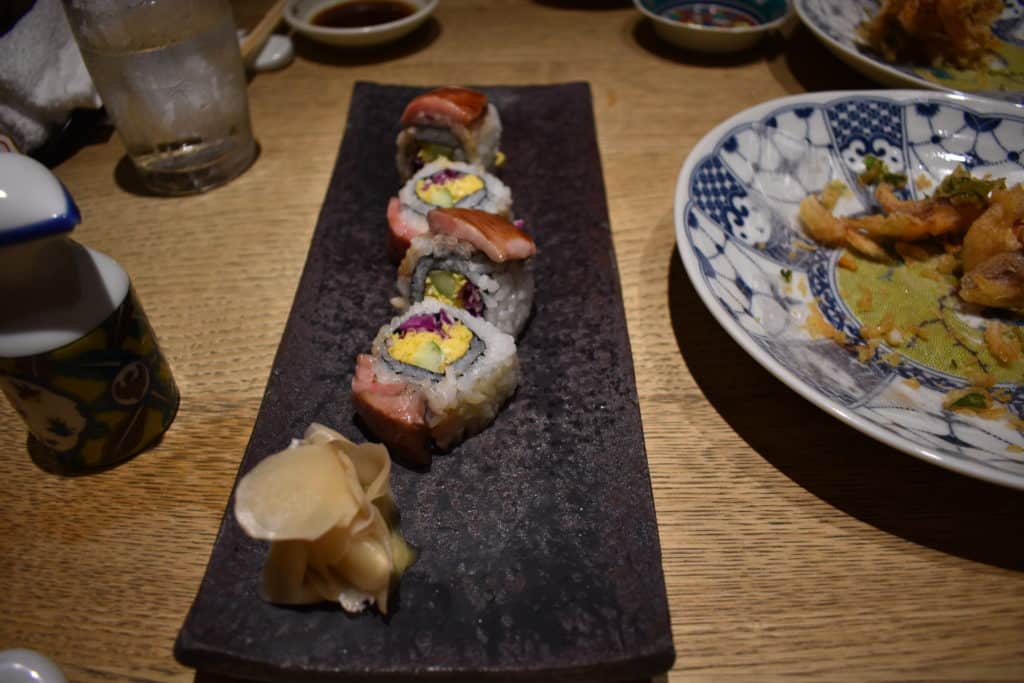
Ramen, takoyaki, sushi and sashimi, okonomiyaki, yakisoba, kakigori, … If you have no idea what I’m talking about, read more about things to know before visiting Japan and look up some pictures of these terms. You’ll want to take the first flight to Japan available.
I feel like Japan is a country that has more prejudices and stereotypes than many other countries. I’m not claiming to be an expert on their personality traits and culture (yes, communication professors, I’m using the word culture again), but I can confirm and debunk *some* of the stereotypes you might have about this country or the people that live in it.
FALSE. Admittedly, sushi is probably the most popular food of Japanese origin in the western world, but Japanese cuisine is much more than just sushi.
A typical Japanese day in terms of meals would look something like this (and yes, I realise I’m oversimplifying this a lot. Don’t sue me please, I’m only trying to convey a message.)
If you have ever experienced a typical Japanese breakfast, lunch or dinner and it’s nothing like this, there’s a comment section below this post begging for you to tell us about it.
Kawaii, as I explain below, is the Japanese concept of cuteness. Anything or anyone that can be considered ‘cute’, such as a stuffed animal, a cartoon drawing or a person, is kawaii in Japan.

Admittedly, if you spend any time in Japan, you’ll quickly find out that this culture of kawaii is much more present than in any other country on earth. However, I still wouldn’t say Japanese girls are obsessed with kawaii.
More specifically, they’re not OBSESSED with it and it’s not just the girls. Although some critics claim that the concept of kawaii has taken over the country and is now rooted in their culture, I disagree.
Also, not only girls like dressing up and being cute. In Japan, it’s acceptable for anyone to exhibit kawaii behaviour. The feeling among men seems to be split about 50-50 between guys who feel like being called kawaii is a compliment and those who would feel offended.
Okay, yes. This one is probably the most true of all.
It’s hard to judge as a foreigner, because it makes sense for any kind of people, including the Japanese, to be reserved towards foreigners. I’m reserved towards travellers when I’m in Belgium.
But still, I went in with the idea of the polite, kind and reserved Japanese person. And that was confirmed on my trip.
Although recent trends have been emerging that are changing that pattern, many people are consciously making an effort to be nice to others. Some people in Tokyo even set up a project to help the people of Tokyo become even more polite.
Japanese people bow before entering a shrine, they apologise when you run into them, they welcome you when you enter their shops, … The list goes on and on. And yes, these might seem like common courtesy to you, but I’m not used to strangers being polite to me for no apparent reason.
Also true. Then again, what’s weird to you may be normal to someone else. Not trying to judge here, but just listing some things that are less common in most western countries.
Here’s a list of some odd things we noticed in Japan:
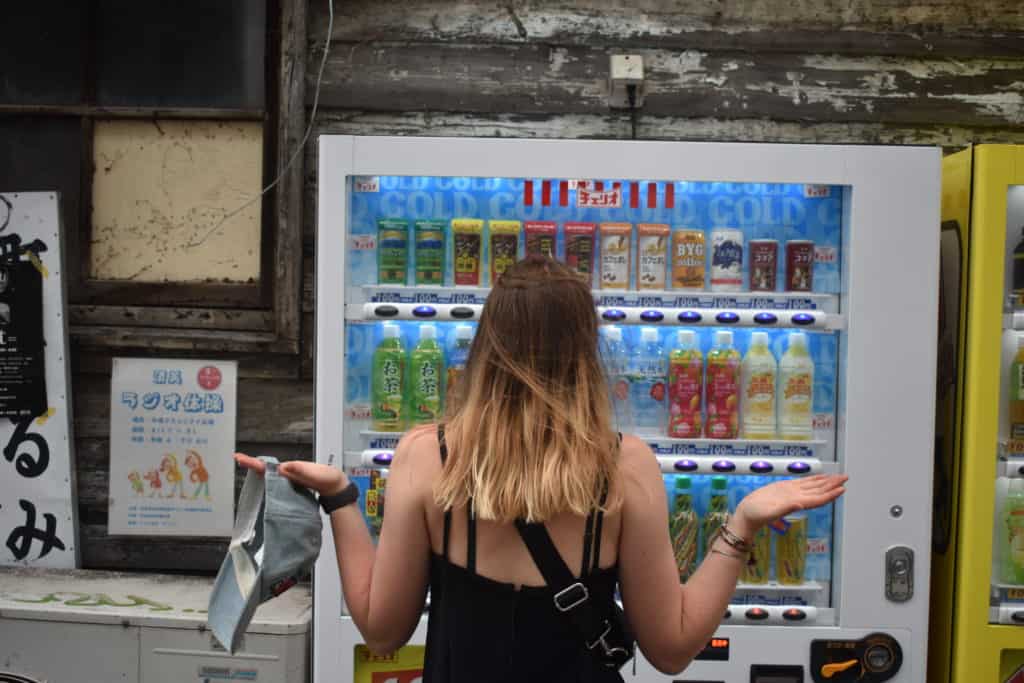
Again, true, and it’s one of the biggest problems Japan is facing nowadays. Their proportion of elderly citizens is among the highest worldwide and that will likely cause the Japanese population to shrink by 30 million in the next 30 years.
Japan is a country with a low fertility rate and a high life expectancy. The large number of old people have a big influence on social policies, such as pensions and long-term healthcare. The Japanese government has started implementing policies to restore the fertility rate and combat the ageing of its population.
Now, for something different entirely. In this last part of the blog post, I’ll try to describe my experience in Japan using the 26 letters of the alphabet, associating each letter with a word or concept that reminds me of what it was like to spend two weeks there.
What better way to start off the ABC of Japan than the Japanese way to say ‘thank you’? During my time in Japan, ‘arigatou gozaimasu’ was essentially the only Japanese expression I felt comfortable saying because it was the only expression I knew.
The religion of Buddhism was introduced to the island in 552 AD by Buddhist monks from Korea. Today, it’s one of the biggest religion in Japan, second only to the traditional Japanese Shinto religion.
The train system in Japan is insane. (See also J is for JR and what you should know before visiting Japan). According to Train-Media, approximately 20 million people commute into Tokyo every single day. Every. Single. Day.
The reason why commuting is so popular in Japan is because rent in big cities is very expensive, and especially in Tokyo prices are insanely high. As a consequence, many people decide to live in the suburbs, where rent is affordable, and commute to work every day.
As one of the most vibrant areas in Osaka, Dotonbori is one of those places that has to be included in your Osaka itinerary.
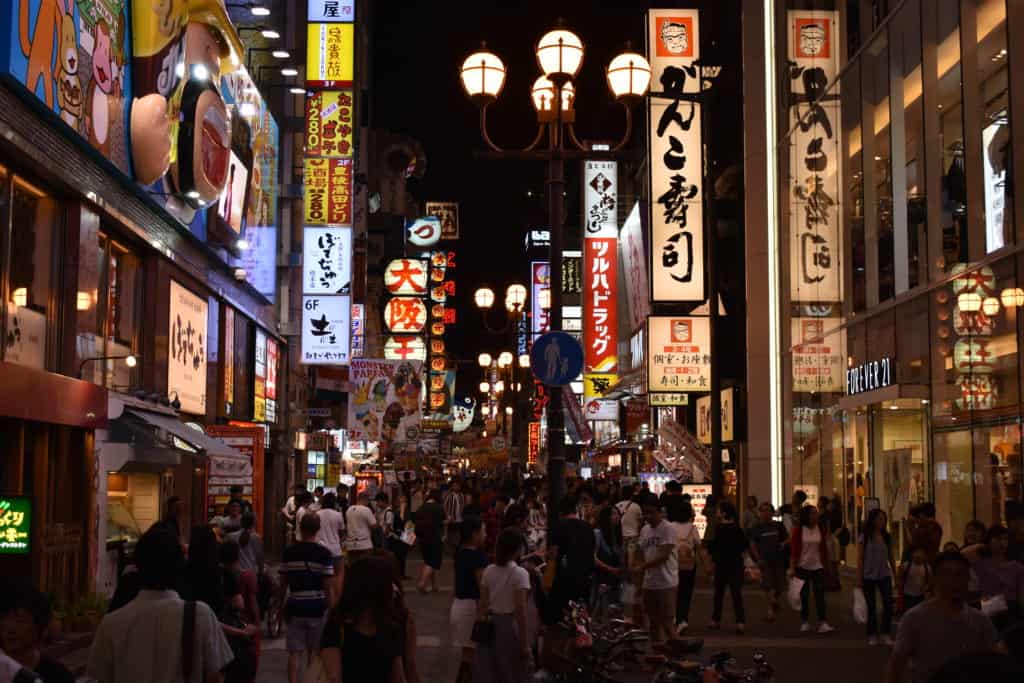
I could literally eat edamame for days. In case you’re unfamiliar, edamame are steamed immature soybeans that are served in the pod, often with salt. In Belgium, we always get a serving of edamame when we get takeout sushi and it’s uh-ma-zing.
It seems like big cities in Japan include department stores like Hankyu, Daimaru and Loft on every street corner. Every department store we visited included a full floor dedicated to food, usually the ground floor and/or the basement. These floors are known as food courts, where you can find all kinds of fresh food.
If you haven’t been to Japan before and you’re imagining what the country is like, chances are geishas are included in that image. Although you might not know the word, you’ll definitely know how they look.
A geisha, literally translated as ‘entertainer’, is a woman who wears traditional costumes and makeup and entertains people (usually men) through performing art, music and dance. Contrary to popular belief in the west, geishas are not prostitutes.
One of the most important concepts in Japanese culture, as you’ll quickly come to realise after spending some time there, is honour. It’s so important to the Japanese that they even have a linguistic system of honorific suffixes to refer to others in conversation.
In Japan, incense is burned at the entrance to every temple. There’s a special Japanese ‘way of incense’ called Kōdō. Similar to a tea ceremony – where incense is also often burned, by the way -, there are specific rules about how to prepare and appreciate incense.
Japan Rail, or JR for short, is the main means of transport on the island. It comprises seven companies that run a network of trains, spanning all the way across the country.
In case you’re wondering how JR trains work – yes, it is quite confusing – check out ‘A quick guide to taking the train in Osaka‘.
Kawaii is the culture of cuteness in Japan. It refers to anything or anyone that can be considered cute or charming. As mentioned above, kawaii is a huge part of Japanese culture and it’s ingrained in most people who live there.
They really do love their lanterns over there. As you can see in this video.
Matcha tea is the central element in traditional Japanese tea ceremonies. Matcha tea is green and has a very specific and peculiar preparation guidelines. Today, matcha is also often used to add flavour to various sweet dishes, such as ice cream, latte and mochi.
Ever wondered why Japanese cities are so big and densely populated? It’s because of nature. A whopping 73% of the country’s area is uninhabitable, which means that almost all Japanese people live on 27% of its landmass.
Of course, that means that the island has an enormous amount of nature for travellers to explore.

Osaka is the third biggest city in Japan. And it’s also a hell of an operating base for day trips due to its central location within the country. Fun fact: Osaka is known among the Japanese as the ‘nation’s kitchen’ for the many delicacies that are produced in the city.
Ahhh, pachinko. Japan’s answer to the gambling ban. Huge pachinko halls can be found in all major cities, usually on dedicated pachinko floors in arcades or as a standalone building.
The point of the game was never really clear to me, but it has something to do with small metal balls that you put into a machine and more metal balls come out. Don’t ask me.
Yes, it was very tough to find a word that started with a Q and had anything to do with Japan. Please just roll with it.
Quail farming industries provide the Japanese with meat and eggs. They’re so popular because the animals grow quickly, are easy to manage and produce eggs at a high rate. The meat serves as a viable protein-rich alternative to chicken.
When I say ramen, I’m not talking about the packets of instant ramen you can buy for 30 cents at Walmart. No, I’m talking about carefully crafted bowls of heaven-sent savoury noodle soup. I had the best bowl of ramen of my life in Tokyo. I’m not exaggerating and I’ll probably never eat ramen that comes close to that one bowl again.
Even if you’ve never heard the name before, you know what Shibuya Crossing looks like. It’s the busiest pedestrian crossing in the world, located in front of Shibuya Station, one of the main commuter hubs of Osaka.
Also: there’s a statue of Hachiko between the crossing and the station and the Starbucks café overlooking the crossing is one of the busiest in the world.
Takoyaki is a very popular street food in Japan, especially in Osaka. It consists of wheat flour-based dough, egg and minced octopus and it’s grilled on a special plate that makes it ball-shaped. I personally don’t love the taste of takoyaki, but I can see why it’s such a popular snack in Japan.
Udon, like ramen, is one of the many popular Japanese noodle varieties. It’s usually served chilled with a soy dipping sauce in the summer or in hot soups and other dishes in the winter. They’re the thickest variety of noodles that is served in Japan.
Japan wouldn’t be Japan without their world-wide image as video game pioneers. Many distinguished game companies, such as Nintendo, Sega, Square Enix and Konami, started in Japan and are still headquartered there.
Today, the fact that video gaming is such a big industry in Japan is reflected in the many enormous entertainment halls, arcades and game centres that can be found in all major cities.
Wasabi is to sushi what peanut butter is to jam. The Japanese usually serve wasabi in the form of a spicy green paste and use it as a condiment in sushi and sashimi dishes. Sushi chefs put the wasabi between the rice and the nori when preparing sushi, in order to preserve its flavour.
Again, X is an incredibly difficult letter to find words for. X-ray fish don’t really have anything to do with Japan, but if you have any suggestions for what to put here, feel free to let me know. Don’t hate me for this please.
Pristella maxillaris, more commonly known as x-ray fish, are a species of fish famous for their translucent body.
Who could have anything against me talking about Japanese food? (Hungry people who like Japanese food, Sander. That’s who.)
Yakisoba is a Japanese noodle stir-fry dish that mainly consists of soba noodles, oyster sauce, pork and vegetables. This was one of the first Japanese dishes I came in contact with as a kid and I loved it right away. I still love it just as much today, if not even more so.
Seems like a nice place to end this blog post. Zen. Do I really need to explain this?
Japan is the country of sushi belts, Shibuya and Starbucks. If you’re still not convinced of the country’s intrinsic value as a tourist destination after reading this, there’s really nothing else I can tell you.
To everyone who made it all the way to the end of this blog post, thank you very much for taking the time to read everything.
What’s your favourite letter in the ABC of Japan? Let me know in a comment!
Thanks for reading!
-S
PIN IT!




As a foreigner from the other side of the world, I quickly found out that Japanese culture is very different from western culture. That’s why I decided to make this post, telling you about the things you should know before visiting Japan. Even after spending only five days here, I found out some things that you should keep in mind when walking through the streets of this Asian island.
I know, it’s difficult to set aside your own cultural bias and see things the way someone from an entirely different culture does. But isn’t that what makes it worth it?
Anyway. Here are 11 tips and tricks that are guaranteed to make your trip to Japan happen without any awkward moments.
Latest update: 15 May 2019
Even though the possibility of getting fined shouldn’t be your only incentive for not littering, you might want to hold on to your trash a little bit longer. Littering on the street will get you a fine of 30.000 yen (about €230/$270).
Similarly, smoking outside of designated smoking areas is very much frowned upon. If you smoke outside at a place you’re not supposed to, you’ll receive a fine of 1.000 yen (about €7,7/$9). It might not seem like a lot, but you’d still be paying more than you would have paid if you hadn’t smoked at all.
That being said, smoking isn’t prohibited in Japan, but it’s just very restricted. To me, it was funny how nobody smoked on the street, but people were allowed to light up a cigarette inside a restaurant or a bar.
My dad has been travelling to Japan for work since the nineties. He told me that it used to be nearly impossible to visit Japan as a foreigner who doesn’t speak any Japanese.
However, we quickly noticed that Japan is actively trying to attract English-speaking visitors. On a train ride, most major train stations are announced both in Japanese and English, some restaurants have an English menu and often have at least one waiter who knows enough English to take your order.
Even if the restaurant doesn’t have an English menu, you can still get a pretty good image of what you can expect through the pictures. Pointing at a picture and nodding at the waiter is more or less a universal thing, I’d say.
And if the menu doesn’t have any pictures, you can still use Google Translate to tell the waiter to surprise you and bring you anything (like we did on our first night in Osaka).
Outside of the culinary world, you can get away with guessing what everything says surprisingly well. If you’re looking at an information board, it’s easy to spot the prices of what you want to visit. Usually, they’re the only numbers on there. And yes, Japan uses the same numbers as western countries.
Yes, you’ll probably pay more for your flight than you would on a weekend trip to the next state/country over. However, Japan is not as expensive as many guidebooks and articles would have you believe.
If you budget your trip well and plan everything in advance, you’ll get to visit one of the most amazing countries on earth without breaking the bank.
In order to save money in Japan, here are some things you can do:

If your electrical outlets don’t look like this, your plugs won’t fit in Japan.
People from North and Central America should have no problem fitting their plugs into these outlets, but anyone who uses other plugs will need to get a plug adapter.
You should also note that the voltage in Japan (100V) is different from North America (120V) and Europe (230V). That basically means that your appliances might not work optimally when plugged into a Japanese outlet.
In most cases, this is nothing to worry about and your devices won’t be damaged. Just to be safe, make sure the label on your device says something like “INPUT: 100-240V, 50/60 Hz”. This means that it can be used and charged in every country (and it’s pretty common nowadays).
You can’t leave Japan without trying some of their wonderful local cuisine.
During my two weeks in this country, I ate many things that I don’t normally eat in Belgium, and I encourage you to do the same.
Food is one of the main expressions of culture, and why would you be travelling if not to get a taste (pun intended) of other cultures?
You can find some of my recommendations below.
Also, the crazy flavours of candy and chocolate are actually a thing. If you’re not going to try them in Japan, you might as well not come at all.
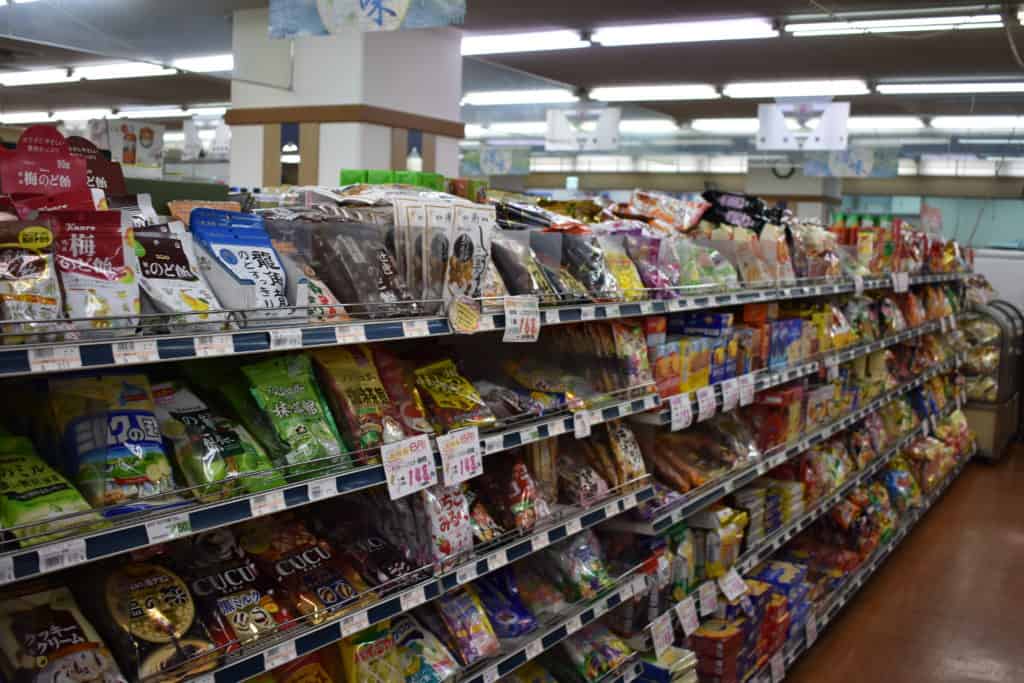
When we came home, my sister and I made candy that looked like sushi. Yes, we made candy. (Side note: it didn’t taste great but we had the best time making it)
Japanese waiters, or any other service workers, don’t expect to be tipped. They often see it as an insult to their service and might even refuse the tip.
As good service is considered to be the standard in Japan, they don’t see why tipping would be necessary.
No matter how customary it might be in your home country (yes, United States, I’m looking at you), you should probably refrain from tipping service workers. Whereas service workers in the States more or less depend on tips for their salary, Japanese workers are fairly compensated and they don’t need, much less expect a tip.
Anyone used to eating with a knife and fork could have a hard time getting food to their mouth in Japan.
I won’t explain how to use chopsticks in this blog post, but I will refer you to this article which explains it marvellously.
If you’ve never used chopsticks before, you may find it easier to learn using training chopsticks (they’re made for Asian kids, but nobody will care if they see you using them as an adult).
Although the Japanese government seems to be making efforts to attract English-speaking tourists, the common folk is still pretty bad at English.
I’m not saying they won’t understand you. I’m not even saying they won’t be able to have a basic conversation with you. But you really shouldn’t expect a lot more than that basic conversation.
Then again, you’re probably not in Japan to talk English. It’s all just a part of the charm of Japanese culture.

Bonus: you’ll get some laughs out of translations made with Google Translate (or its Japanese equivalent).
Wherever you’re staying in Japan, it’s very unlikely that you’ll need a rental car. Period.
If you plan on spending a lot of time in major cities, you’ll be fine using trains, taxis and your feet.
If you want to hop from one city to the next, I recommend using Japan’s network of high-speed trains, Shinkansen. Most Shinkansen lines are covered by your JR Pass, but I recommend booking tickets in advance. It’s not necessary, but at least you’ll be guaranteed a spot on the train.
The trains work like a charm. They’re almost never late because they’re operated by seven privately-owned companies (who work together in the Japan Railways Group). If they are late, the delay is announced and explained in other trains, which is more than can be said for other countries (not-so-subtle reference to how badly public transport in Belgium is organised: check).
Either way, the chances of you needing a rental car are pretty slim.

Yes, the trains are a pleasure to use and they’re very well organised.
And yet, to an outsider like me, it was still a bit confusing at first.
If you have a JR Pass, as I suggested before, you can pretty much take any JR train in Japan. (That’s why the JR Pass is such a good deal, duh.)
Where Japanese commuters are able to open the turnstile by scanning their card, you won’t be. Luckily, you’ll find a clerk nearby all turnstiles and they’ll let you through after you show them your JR Pass. Sometimes they don’t even want to put in the effort of actually looking at your pass and you can just walk through like that.
It might take you a few days to get used to how public transport in Japan works, but once you get it, it’s easy.
These were my things to know before visiting Japan.
Now, you’re all ready to explore the beautiful country of Japan. Enjoy your time there and be sure to send me pictures if you do visit.
Thanks for reading!
-S
PIN IT!


Design by NXNW.